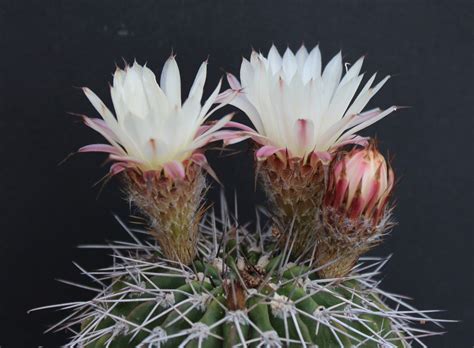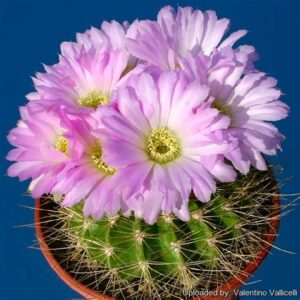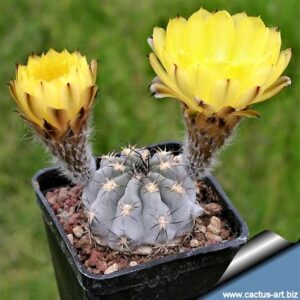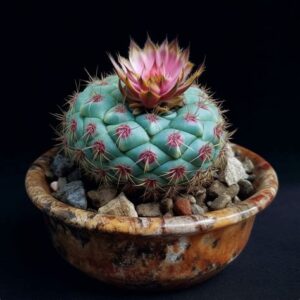The Acanthocalycium spiniflorum f. Klimpelianum, often lauded for its striking appearance and low maintenance needs, is an exquisite addition to any cactus enthusiast’s collection. This distinctive cactus hails from the vast family of Cactaceae and is primarily notable for its vibrant blooms and unique spination. In this article, we will explore the various facets of growing and caring for this remarkable species, ensuring that both novices and seasoned gardeners can cultivate it successfully.
Understanding the Acanthocalycium spiniflorum f. Klimpelianum entails delving into its origins, physical characteristics, and optimal growing conditions. This alluring plant is native to Argentina, where it thrives in arid and semi-arid environments. As such, it exhibits specific adaptations that allow it to flourish despite challenging climatic conditions.
The following sections will provide comprehensive insights into the life cycle of this stunning succulent, as well as practical guidance to foster its growth. From soil composition to watering routines, we will cover all the pertinent details required to cultivate this plant in a home or greenhouse setting.
Before embarking on the journey of cultivating Acanthocalycium spiniflorum, it is crucial to familiarize oneself with several key characteristics that define the life of this cactus.
Firstly, this variety displays an upright form, typically reaching a height of about 12 inches and a width of approximately 4 inches. Its body is adorned with clusters of pronounced spines that can vary in color from white to golden-yellow, providing a visually striking contrast against the deep green surface of the plant. The flowers, which emerge predominantly in late spring or early summer, showcase a breathtaking array of colors, particularly shades of pink, red, and yellow. Each bloom can reach a diameter of up to three inches, attracting pollinators and adding vibrancy to any garden space.
As we delve deeper, we will uncover the nuances of cultivation, encompassing the essentials of lighting, soil, watering, feeding, and pest management to ensure a thriving specimen.
Lighting Essentials: Providing the Right Illuminance
One of the most critical factors impacting the health of Acanthocalycium spiniflorum f. Klimpelianum is the quality and quantity of light it receives. This cactus thrives in bright direct sunlight, ideally requiring around six hours of sun exposure each day. In indoor environments, south-facing windows are optimal, though care must be taken not to expose the plant to intense midday sun, which may lead to sunburn.
For those who prefer growing this cactus outdoors, a location that provides morning sunlight and afternoon shade can yield remarkable results. It is essential to observe the plant during the first few weeks of relocation to ensure it acclimates well to its new light conditions.
The importance of light cannot be overstated; inadequate illumination can result in etiolation—the elongation of stems as the plant seeks out light, leading to a spindly and unhealthy appearance. Conversely, too much direct sunlight can scorch the skin, manifesting as discolored patches. Monitoring and adjusting lighting conditions according to seasonal changes is vital for optimal health.
Soil Composition: The Bedrock of Healthy Growth
When it comes to soil, Acanthocalycium spiniflorum f. Klimpelianum prefers a well-draining substrate. Cacti thrive in a mixture that possesses excellent drainage capabilities to prevent root rot, which is a common concern in succulent cultivation. A commercial cactus mix will often suffice, as long as it is supplemented with inorganic materials such as perlite or coarse sand to enhance drainage.
Home gardeners may opt to create their own mix, combining one part potting soil, one part perlite, and one part coarse sand. This blend provides the necessary aeration while retaining adequate moisture levels. It is advisable to select a pot with drainage holes to ensure that excess water escapes freely, further mitigating the risk of rot.
Watering Appropriately: Striking the Perfect Balance
Watering is an art form when it comes to succulent care, and Acanthocalycium spiniflorum f. Klimpelianum is no exception. During the growing season, which extends from late spring to early autumn, this cactus should be watered thoroughly, allowing the water to seep through the drainage holes before allowing the soil to dry completely. Over-watering is immensely detrimental, as this species is adapted to arid conditions and will suffer if left in soggy soil.
In contrast, during the dormant winter months, watering should be significantly reduced. The cactus enters a state of rest, and excessive moisture can lead to fungal growth or rot. Observing the weight of the pot can help gauge when to water; a lighter pot typically indicates that the soil has dried sufficiently.
Fertilizing for Optimal Growth: Nourishing Your Cactus
While Acanthocalycium spiniflorum f. Klimpelianum is not a heavy feeder, providing a balanced liquid cactus fertilizer during the growing season can promote robust growth and prolific flowering. A diluted solution at half the recommended strength can be applied every four to six weeks, ensuring the plant receives the essential nutrients without risking fertilizer burn. Avoid fertilizing during the dormant period, as the plant will not utilize the extra nutrition.
Pest Management: Protecting Against Intruders
Proactive pest management is critical for the healthy maintenance of Acanthocalycium spiniflorum f. Klimpelianum. Common pests, such as mealybugs and spider mites, may pose threats. Regularly inspecting the plant for signs of infestation—such as webbing or white cottony masses—can facilitate early intervention.
Should an infestation occur, natural insecticidal soap or neem oil can serve as effective remedies. Both options are less harmful to the environment compared to synthetic chemicals, thus preserving beneficial insects and maintaining an ecological balance.
Propagation: Expanding Your Cactus Collection
For those interested in propagating Acanthocalycium spiniflorum f. Klimpelianum, this cactus can be easily grown from seeds or offsets. Seed propagation requires a careful approach, using a sterile mix and covering the seeds lightly. They should be kept warm and maintained in a humid environment until germination occurs. Once seedlings mature, they can be potted individually.
Alternatively, offsets can be snipped away and allowed to dry for a few days before replanting them in a proper soil mix. This method allows for faster establishment compared to seeds. It is advisable to wear gloves while handling, as the spines can be quite sharp.
Conclusion: A Rewarding Gardening Experience
Growing Acanthocalycium spiniflorum f. Klimpelianum is not only gratifying but also brings a spark of vibrant aesthetics to any plant collection. With attention to lighting, soil, watering practices, and pest management techniques, gardeners of all levels will find success in cultivating this captivating cactus. By nurturing this species, one can enjoy its alluring flowers and eclectic form for years to come, enriching the world of succulent gardening.





Leave a Comment